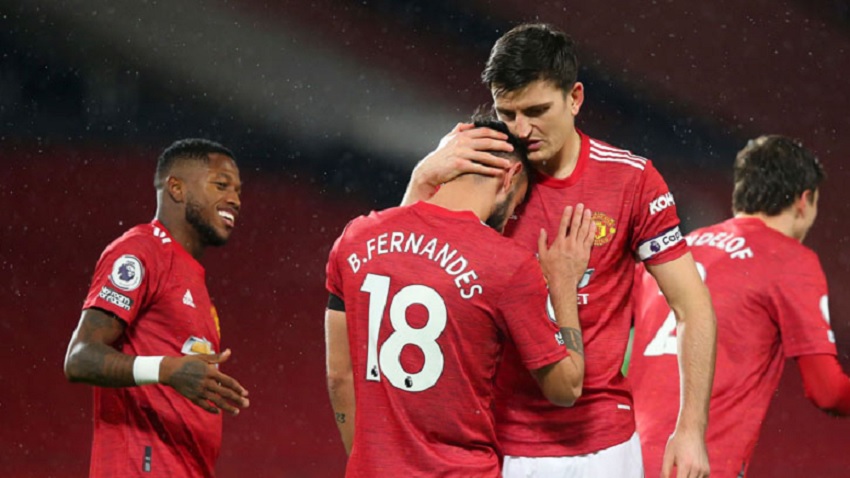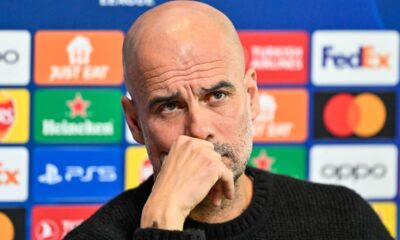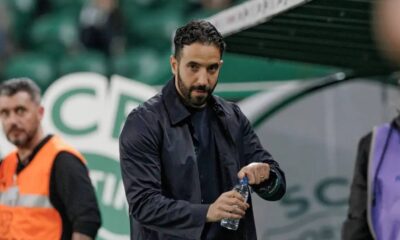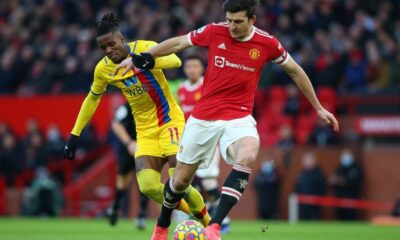Football
Manchester United’s next permanent manager: Spanish tiki-taka or Dutch total football?
It’s two months since Ralf Rangnick joined Manchester United. The German strategist has delivered results, but will move behind the scenes at the end of the season and leave his role at the touchline to others. In this article, we will specifically discuss the playing styles or the pros and cons of each candidate for the Manchester United manager position.

It’s been two months since Ralf Rangnick arrived at Manchester United. The German strategist has delivered results, but will move behind the scenes at the end of the season and leave his role at the touchline to others. In this article, we will specifically discuss the playing styles or the pros and cons of each candidate for the Manchester United manager position.
Julen Lopetegui | Sevilla FC
Julen Lopetegui is currently spending his third season on the Sevilla bench. The experienced coach has successfully repaired his reputation in Andalusia after a failed stint of only 14 games at Real Madrid, where he was supposed to replace Zinedine Zidane.
In two seasons, he took Sevilla to the Champions League twice, even winning the Europa League in his debut season. In the current season, with only two defeats, Lopetegui’s charges are second in LaLiga, four points behind Real Madrid.
Playing style
Lopetegui practices an intense Spanish tiki-taka, backed by a solid defensive style. Sevilla currently have the best in the league, conceding just 16 goals in 22 games. It is also just below the top in average ball possession and number of successful passes.
Sevilla play in a 4-3-3 formation, sometimes even 4-2-3-1. When playing on the ball, it uses high-pitched flankers who keep the width of the pitch. This allows the wingers to retreat into the middle forming a dangerous attacking trio.
The defensive midfielder functions as a half-back. He often pulls back to the fullbacks in order to form a ‘stopper’ trio in the passing and transition phase. The remaining two midfielders are tasked with ensuring a smooth transition phase, turning the whole team into a 3-4-3 formation.
When the ball gets close to the opponent’s goal, the formation usually changes to 2-3-5. The two wing backs are already at the level of the wings, who occupy the goal area together with the striker. The task of the outside backs is most often to centre the ball into the box, in which they are the most active of the team.
The right wing-back, usually Jordan, plays a more retracted role, supporting the very active Ocampos with the right-back. They complement each other and often use tandems, either on the inside or the outside. At the breakdown, the right central midfielder also needs to be able to play under a lot of pressure, which he pulls on himself by dropping lower.
Jordan has completed 153 passes this way under attack this season. That’s the highest number on the team and the 13th highest in LaLiga.
Rakitic, on the other hand, has a much looser role and figures more as a 10 than a classic 8. When the ball is on the right side, he moves to the axis below the striker and helps with the combination. Sometimes he even retreats into the space between the winger and the striker. This sometimes puts left back Acuña in the position of inverted fullback withdrawn to the middle under the winger and Rakitic in the space between.
Both wings often go on runs to break up the opponent’s defensive line. When they get the ball in their feet, they often try to outmuscle the opponent by dribbling or looking for teammates in tandem.
Sevilla’s overall focus when playing the ball is on the wing areas, where they outnumber their opponents and get the ball into dangerous areas, i.e. in front of goal. Thus, a lot of emphasis is placed on the attributes of the fringe players.
Unlike Ralf Rangnick, high pressing is definitely not one of Lopetegui’s domains. Sevilla are even the least pressing team in LaLiga. However, a patient approach to defending usually leads to winning the ball anyway in less technically equipped teams, bringing extra defensive stability.
United under Lopetegui
The attacking duo of Fernandes and Ronaldo in particular would fit the system perfectly, with Rakitic’s role and the typical spike waiting for centres. The position of a winger retreating to the centre of the pitch also suits Rashford, while Sancho could again complement the active Dalot, and look for centres at the back post for the England international. Luke Shaw also has good memories of closing down the back post from EURO 2020.
It would be interesting to see how Lopetegui would handle the defensive midfielder position, which United have been languishing in for a long time. He could experiment with Sweden’s Lindelöf, who has the technical parameters for the position and is used to building in a three-man midfield from the national team. But otherwise, without reinforcements, it would probably be filled by Matic.
The midfield three would then probably be completed by McTominay or Fred. If he stays, Pogba could operate there alongside Bruno. However, the question remains whether he would be able to perform his defensive duties.
The problem could arise when playing without the ball. A not very active pressing might not appeal to United management, especially when Ralf Ragnick will surely have a say in the choice of a new coach. Lopetegui also doesn’t have the best history with a cabin full of big names, last failing in a tense environment at Real Madrid.
Luis Enrique | Spain national team
Luis Enrique is one of the most successful coaches of the last decade. With Barcelona between 2014 and 2017, he dominated LaLiga twice, the Copa del Rey three times and even lifted the Champions League winners’ trophy over his head in his first season. He and his charges will attempt to achieve even greater success at the World Cup in Qatar.
Enrique has been the helmsman of the Spanish national team since November 2019, and so far he has suffered four defeats in 26 matches, leading the Iberian country to the semi-finals of the EURO and the final of the Nations League.
He has also successfully qualified for the World Cup in Qatar, after which his contract will end. For United, this would likely mean another six months under the interim management of Ralf Rangnick.
Playing style
Luis Enrique is the definition of Spanish football. At the EURO, his charges averaged an incredible 72.7% ball possession with 673 successful passes per game. So it is clear that football under Enrique may not be very attractive to fans, but it is effective and dominant.
The high possession of the ball was also ensured by the high pressing and repression when losing the ball by the Spanish national team at the EURO. At the tournament, they scored the most ball gains within five seconds of the start of the attack, 318 to be precise.
Under Enrique, the Spaniards practice a 4-3-3 system with inverted running backs. Thus, in the opponent’s half, the wingers keep width and the offensive midfielders converge in the spaces between them and the striker (called mezzos), while the wing-backs retreat closer to the defensive midfielder. The formation thus transforms into a 2-3-5.
A significant method of penetrating low blocks is the use of inside tandem mezzalows behind the wings. The ball moves to the outside back (still at the by-line at this stage), after which the opposing winger takes off. The winger runs down below and takes the opposing wing-back with him, creating space for the midfielder to run in behind him.
He either collects the pass or pulls down another defensive player from his position, opening up space for a combination through the middle of the pitch.
United under Enrique
Although Enrique is undoubtedly one of the best coaches of our time, there is no denying the clash between his and Manchester United’s philosophies. The Red Devils are simply not used to patient waiting and professorial 1:0 victories.
But if given the means, the Spanish coach would certainly be able to reshape United in his image. He would certainly lack a typical winger, for apart from Sancho he has only Elanga to fill that position. On the right side, he also doesn’t have a midfielder who would be able to play as part of the midfield.
However, he would be able to fit both Pogba and Bruno Fernandes into one midfield. The latter could also fill in for Ronaldo in the false nine position, which Enrique also has in his repertoire. The problem would be in finding a technically proficient defensive midfielder.
Neither McTominay nor Fred are responsible enough towards the back to cover the spaces left by Pogba and Fernandes, so reinforcements would definitely have to come in. The stoppers would be required to have great technique and ball management, which could spell the end for Harry Maguire, who would probably start to be replaced by Lindelöf.
Erik ten Hag | AFC Ajax
Probably the most wanted man at Old Trafford. The Dutch coach is coveted by Red Devils fans, mainly due to his results with Ajax. Whether it’s dominance on the domestic scene or a successful Champions League campaign.
Playing style
The fourth coach on this list also practices a 4-3-3 formation. Ajax’s style of play could be described as total football. Ten Hag throws in countless possible rotations and ways to free himself or his teammates.
So let’s start at the back. Ajax’s entire system is asymmetrical, which is mainly set by the wingers and wing-backs. Blind, more of a technical flanker than a goal-line grinder, plays on the left side, and so he often joins the midfield or the tracking trio at the breakdown.
Mazraoui, on the other hand, is noticeably more offensive and prefers to push forward. Thus, when playing the ball, Blind retreats to the midfield, leaving the wing space where Tadic must remain. Conversely, on the right side, Mazraoui holds the touchline, so the left-footed Antony retreats more to the touchline from the right wing. The space created between Tadic at the touchline and the striker on the axis will be filled again by the left offensive midfielder Gravenberch.
The stoppers won’t be shamed either. In particular, right-back Timber often makes trips forward, with or without the ball. Either defensive midfielder Alvárez can step in for him, or Blind moves to the stopper position and Timber becomes a midfielder.
In the opponent’s half, the formation transforms back into a 2-3-5 formation with inverted backs and spread wingers, but with much more frequent and fluid rotations. Virtually the only player who keeps his position is the spike forward Sebastian Haller.
Ajax’s pressing is based on personal defending and quick access to the opponent’s half.
United under Ten Hagem
One of the advantages of engaging Erik ten Hag is undoubtedly the good relationship with Ajax and its talented youth. Players like Alvárez, Timber or Antony would certainly be useful to United and the presence of the Dutch coach would add greatly to their potential arrival. At the same time, Donny van de Beek, whose previous stint in England could be more accurately described as an ordeal, could return to the squad.
Overall, I would see the asymmetric system rather turned the other way around. Sancho could play on the right touchline, Rashford on the left wing with the option of getting to the centre of the pitch. I could see Lindelöf at left-back, and reinforcements would again be needed at defensive midfielder and right-back. But there is an option via the leg of Shaw.
The pressing would be a problem for Ronaldo, who would fit well into the system when playing the ball, but would stagnate significantly without him. In fact, when Ajax attack, all the opposition players are personally dismantled except for the stoppers, both of whom are handled by the spearhead striker. Ronaldo’s passivity in this regard could cause major problems.
Mauricio Pochettino | PSG
Mauricio Pochettino is the only one on the list of candidates with Premier League coaching experience. He has sat on the bench of Southampton or Tottenham Hotspur during his career. His greatest successes have come at the latter.
He coached 293 games in London and managed to make the most of the minimum. He took the team to the Champions League final and apart from his debut season, they always finished fourth in the league. However, he left without a trophy, which he is currently trying to claim with a star-studded squad at PSG.
And even there, the first season didn’t go to plan as the Argentine coach failed to defend the league title. But he is on course for much better results this season, having suffered one defeat in all competitions so far.
Playing style
Pochettino is a very flexible coach with lots of possible variations. However, his teams are always characterised by active pressing and the pursuit of simple purposeful football. Currently in the French capital he sticks to a 4-3-3 system with offensive flankers.
The team regroups into a 3-2-5 formation as the game builds up, with one of the midfield trio (usually made up of hard-working but highly technical midfielders like Verratti) moving between or on the edge of the midfield pairing. The outside backs are pulled up high to the level of the offensive trio.
Lionel Messi has a very loose role, but so does Julian Draxler, for example. These wingers try to outnumber the opponents in the middle of the pitch, often blending in with the two-man midfield.
Sometimes they form a quadrangle in the midfield and sometimes there is a rotation where a midfielder replaces them in the space between the wingback and the fullback. Messi has thus adapted his role to his advancing age and is becoming more of a withdrawn playmaker. At PSG, he currently has the highest average of passes behind the defence per game.
Often, however, the attacking trio reacts by seamlessly shifting to the right when Messi is brought down. Icardi becomes the right winger, the left winger moves into his position and one of the midfielders moves into the space between the left wing positions.
Pochettino relies heavily on the individual quality of the midfield with this style of play, as they have to take and distribute passes quickly. At the same time, they have to be very responsible towards the back, due to the poor backchecking of the attacking stars.
United under Pochettino
The main advantage of engaging the Argentine coach is his Premier League experience, which none of the other candidates have. At the same time, he would be able to make great use of Sancho as a partial midfielder. The position of Bruno Fernandes, who is neither a typical number eight nor a winger, would be questionable.
Pochettino would certainly have a big problem with the weak midfield he relies on in his system. Neither Fred or McTominay are up to the quality of PSG’s midfielders, and the nimble transition and linking of strikers with the defence could stagnate. The advantage, as with Lopetegui, is the use of a half-back at defensive midfielder, where Lindelöf could again fill in.
Summary
I personally like Erik ten Hag as the most suitable candidate. This would give United a long-term project with youth involvement that could take him back to the highest rungs of European football once again. Moreover, there would certainly be no shortage of attractive football.
From a tactical point of view, however, it would be very interesting to watch Luis Enrique and Pep Guardiola duel in the Premier League. But I see his arrival as the least likely of all. A return of Pochettino to the Isles or, conversely, a first experience of island football for Julen Lopetegui sounds tempting.
Sources used: Transfermarkt, FBref
.










